Menu
Search...

TABLE OF CONTENTS
The tricky part was dealing with the air ejected parts flying out the back of the die. I knew that these parts wouldn't follow the same path every time, so the sensor needed to account for that variability.
The Solution:
We installed a set of 12” tall transmitter/receivers on a custom-built small frame at the back of the press. This setup acted like a light curtain field, allowing the ejected parts to pass through the sensors. If the part passed through correctly, the control system would let the press continue for the next stroke, all at a speed of 55 SPM.
We also had to consider what would happen if a part got stuck in the die. If this occurred, the back sensors would detect that the part didn't pass through the sensing field at the expected press angle, and the press would automatically stop. This meant that now the press could run unattended. Furthermore, if the press stopped due to a sensor fault, the control system was designed to identify which sensor missed its signal. This feature was crucial for troubleshooting and getting the press up and running again quickly.
Die protection sensors are engineered to monitor a specific event related to a Die, detecting whether a part or scrap is present or absent, as required. Once this determination is made, the sensor sends a signal to the press control system to stop the press.
Die Protection sensors provide a level of protection for not only the Die, but the press as well. When properly selected and installed, these sensors allow the press to run autonomously, providing a level of safety for the company, while contributing to its profitability.
Basic working principle The term "die protection" describes an electronic system that uses simple switches or sensors installed in and around an industrial press, and tooling to monitor critical events in the stamping process. The sensors are positioned and configured so that they detect problems with enough time to stop a press before the die closes, thus preventing damage to the tooling and the press.
The primary goal for Die protection is to detect problems and stop the machine before any damage can occur. When you compare different types of press monitoring equipment, you will find that there is no quicker ROI than having a properly implemented die protection system. When evaluating different types of press monitoring equipment, it becomes clear that a well-implemented die protection system offers one of the fastest ROIs. The very first time a die protection controller successfully stops the press in time to avert a die crash, it likely justified its cost.
Production Resources provides complete die protection sensor and control solutions designed to integrate into your Wintriss or other die protection control systems. We carry a full line of retro-reflective, diffuse reflective, through-beam, photoelectric fork, and inductive proximity sensors, and electro-mechanical probe style sensors.
Retroreflective sensors that use a reflective target (included) to establish a sensing beam. The CX-29 sensor has a 10 ft (3.05 m) maximum sensing range. When installed with the sensor and reflector less than 10 ft (3.05 m) apart, the unused range (also called the “excess gain”) provides extra power to enable the sensor to shine right through lubricant and other contaminants.
The sensor and reflector feature built-in polarizing filters to allow the sensor to detect even very reflective parts.
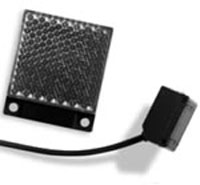
Through-Beam Photosensor is a general-purpose photosensor with separate emitter and receiver. The CX-21 has a long range, 33 ft (11.48 m). When this sensor is installed with the emitter and receiver less than 33 ft (11.48 m) apart, the unused range (also called the “excess gain”) provides enough power to enable the sensor to shine right through lubricant and other contaminants.
The CX-21 has a switch to select light-on or dark-on operating mode. Use the dark-on (beam break) mode for detecting part or slug ejection, or short feed. Use the light-on (beam make) mode for detecting a hole in the strip. The CX-21 uses infrared light.
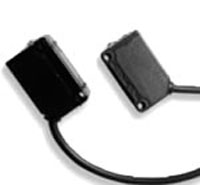
Optical Convergent Sensors are reflective photo-sensors with the emitter and receiver in the same housing. The MQ-W20 has three beams (one emitter and two receivers), and uses triangulation to set a precise actuation point (focal area) at an adjustable distance in front of the sensor.
Any object outside of the focal area, whether it is closer or more distant, is ignored. The MQ-20W features a rugged, die-cast metal housing, with a detecting range of 1 to 8 in. (25.4 to 203.2 mm).
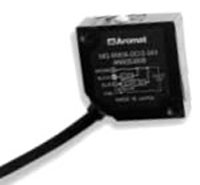
A Photoelectric Fork Sensor is a through-beam photosensor with a prealigned emitter and receiver permanently housed in a U-shaped cast metal case. Used primarily for short-feed detection, the RT-610-50 is typically installed at the end of the die to detect either a hole or the edge of the strip.
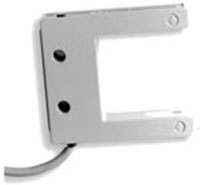
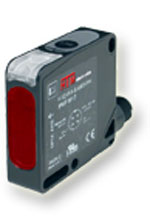
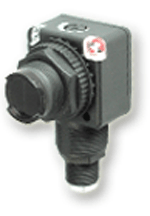
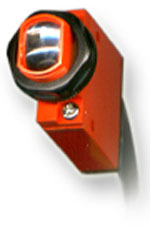

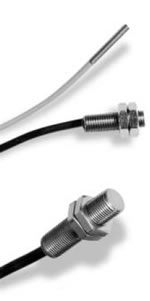
HTM Sensors has the widest range of stainless steel faced proximity sensors on the market for harsh environments.
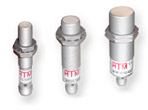
To learn more and see our full line of Inductive and Weld Immune sensors download our HTM catalog.
Click here for electro-mechanical sensors.
Production Resources offers a full range of die protection equipment. You might also be interested in:


© 2004-2024